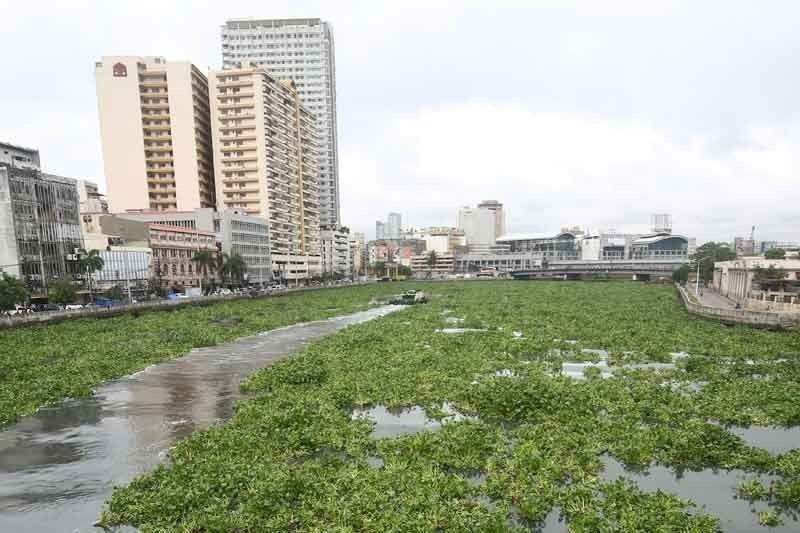Environment groups blast gov’t on mining ‘turnaround’
Environment groups on Friday blasted the plan of the Department of
Environment and Natural Resources (DENR) to issue more mineral
reservations in the country as a “reversal” of Duterte government’s
supposed anti-mining policy.
In separate statements, the Center for Energy, Environment and Development and the Kalikasan People’s Network for the Environment scored the DENR for its failure to live up to its mandate of safeguarding country’s natural resources.
“If this (proposal) pushed through and gets affirmed by the President, this will then be a clear signal of the blatant reversal of anti-mining pronouncements of the President during his Presidential campaign and his past (State of the Nation Addresses),” said CEED Gerry Arances, executive director.
The DENR, in a news release on Thursday, announced it was
set to declare more mineral reservation areas throughout the country “to
help provide equitable access to mineral resources and generate
additional nontax revenues for the government.”
The announcement came on the heels of the 2017 Commission on Audit report, which questioned the Mines and Geosciences Bureau’s failure to collect some P2.7 billion in royalties from existing mining operations.
The government’s economic managers also blamed the lackluster performance in the mining and quarrying industry for the “slow” growth of the economy, dropping to 6 percent in the second quarter.
Lawyer Analiza Rebuelta Teh, DENR undersecretary for mining concerns, said the declaration of mineral reservations shall allow government to collect royalties—something it cannot do with the present mining operations.
But the DENR must approach its newest tack with caution, Arances said, as the government’s control and management of declared mineral reservations remain “plagued by various issues”.
“It has been clear in many studies that no amount of increase in share and royalties from mining can outweigh the devastating impacts to watersheds, forest cover, climate resiliency and many others,” he said.
For Kalikasan PNE, the planned expansion of mineral reservation areas is “unsurprising”, as the Duterte administration has been known for “successive reversals” amid the President’s “tough-talk” on mining policies.
Leon Dulce, Kalikasan national coordinator, cited the impending reversal of the closure and suspension orders for 24 of the 28 mines sanctioned by former Environment Sec. Regiina Paz Lopez, and the recent lifting the two-year mining exploration ban.
He dismissed the newest DENR move as one for fiscal equity, but a
“clear attempt to further wholesale” mineralized lands in the country.
Opening up more lands to mineral reservations is part of the “more business as usual” scenario which the Duterte government is pursuing, he said.
“The fact that this peacocking to foreign mining investors when outstanding problems in environmental and social regulations remain unaddressed runs contrary to the promise of cracking down on destructive mines,” Dulce said. /kga
In separate statements, the Center for Energy, Environment and Development and the Kalikasan People’s Network for the Environment scored the DENR for its failure to live up to its mandate of safeguarding country’s natural resources.
“If this (proposal) pushed through and gets affirmed by the President, this will then be a clear signal of the blatant reversal of anti-mining pronouncements of the President during his Presidential campaign and his past (State of the Nation Addresses),” said CEED Gerry Arances, executive director.
The announcement came on the heels of the 2017 Commission on Audit report, which questioned the Mines and Geosciences Bureau’s failure to collect some P2.7 billion in royalties from existing mining operations.
The government’s economic managers also blamed the lackluster performance in the mining and quarrying industry for the “slow” growth of the economy, dropping to 6 percent in the second quarter.
Lawyer Analiza Rebuelta Teh, DENR undersecretary for mining concerns, said the declaration of mineral reservations shall allow government to collect royalties—something it cannot do with the present mining operations.
But the DENR must approach its newest tack with caution, Arances said, as the government’s control and management of declared mineral reservations remain “plagued by various issues”.
“It has been clear in many studies that no amount of increase in share and royalties from mining can outweigh the devastating impacts to watersheds, forest cover, climate resiliency and many others,” he said.
For Kalikasan PNE, the planned expansion of mineral reservation areas is “unsurprising”, as the Duterte administration has been known for “successive reversals” amid the President’s “tough-talk” on mining policies.
Leon Dulce, Kalikasan national coordinator, cited the impending reversal of the closure and suspension orders for 24 of the 28 mines sanctioned by former Environment Sec. Regiina Paz Lopez, and the recent lifting the two-year mining exploration ban.
Opening up more lands to mineral reservations is part of the “more business as usual” scenario which the Duterte government is pursuing, he said.
“The fact that this peacocking to foreign mining investors when outstanding problems in environmental and social regulations remain unaddressed runs contrary to the promise of cracking down on destructive mines,” Dulce said. /kga
_______________________________________________________


